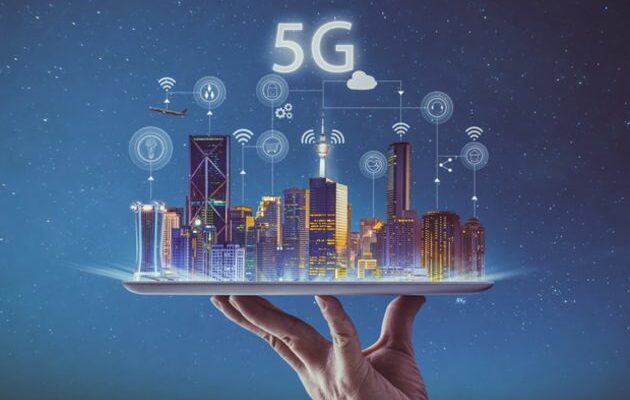With a theoretical speed up to 10 times higher than 4G and a latency time divided by 10, 5G has not yet shown all its promises. The arrival in 2023 of the so-called standalone phase – 5G core network – will bring its share of disruptive innovations. These are the companies that will benefit the most from this increase in performance in the areas of industry 4.0, telemedicine or connected and autonomous cars.
To take advantage of these opportunities, the government launched, in July 2021, as part of France 2030, its acceleration strategy for 5G and future telecommunications network technologies. A first tranche of 480 million euros has already been released, which was spread out until the end of 2022.
40 projects have already benefited
11 research projects and 29 projects relating to the development of sovereign solutions involving 41 players, including 22 SMEs and start-ups, have benefited from it. Connected ports, factories of the future, autonomous mobility… the labeled projects cover a wide spectrum of use cases, as can be seen on the map below, drawn up last June.

Second stage of the rocket, the government has just launched a new call for projects (AAP), open until February 28, 2024.
The mobilization of public funding is also increased to more than 750 million euros from France 2030 by 2025. By 2025, the strategic plan provides for the creation of 20,000 new jobs in a 5G market in France which should then reach 15 billion euros.
Innovation, sovereignty, sobriety
Led by the Directorate General for Enterprise (DGE), the new system is based on three pillars: innovation, sovereignty and eco-responsible digital technology. On the R & D side, it is a question of anticipating the evolutions of 5G with the imminent arrival of the standalone phase and the virtualization of the core network. The highly anticipated technology of “network slicing” will consist of virtually cutting the network into “slices” in order to guarantee end-to-end quality of service for particularly critical use cases.
It also involves conducting experiments on new frequency bands, beyond the spectrum already allocated by Arcep.
5G is also associated with the rise of artificial intelligence. In the factory of the future, it collects data from a multitude of connected sensors. Machine learning technologies then make it possible to process and analyze this data for the purposes of predictive maintenance or quality control (computer vision).
Waiting for 6G
France must also prepare for the future standard of mobile communication. If 6G will not be marketed until 2030, the major maneuvers have already begun.
With speeds up to 100 times higher than those of 5G, on a frequency band between 100 GHz and 30 THz, the new standard should, according to Huawei, bring us into the world of “extreme connectivity”. Namely that of metaverses, extended reality and digital twins.
The call for projects then focuses on “the development of sovereign solutions for telecom networks guaranteeing a high level of security and reliability”. This sovereignty issue covers the entire telecom infrastructure (software, hardware and services) up to 5G terminals. It echoes the sidelining of Chinese supplier Huawei in favor of European equipment manufacturers Nokia and Ericsson.
Edge computing, closer to the source
Sovereignty also involves the deployment of private 5G networks.
By relying on its own infrastructure, a company becomes independent of the public network of operators. It is allocated a bandwidth entirely dedicated to its needs and exercises direct control over the security of its installation and its data.
Another avenue mentioned: the use of edge computing consists of deporting computing power to the periphery of the network. The data no longer passes through the cloud to be processed, it is processed locally, as close as possible to the source. A connected industrial robot can be coupled with this type of device, without depending on the public cloud.
A vast energy sobriety plan
Finally, the call for projects focuses on improving the environmental impact of telecom networks by controlling their energy consumption and promoting the eco-design of equipment in order to limit their carbon footprint.
In this regard, the telecom sector has embarked, under the impetus of Arcep, on a vast energy sobriety plan.
The call for projects is open to companies of all sizes, research organizations and associations. The expected projects must have a budget of more than 2 million euros. This amount can be lowered to 1 million euros for SMEs presenting an individual project.
